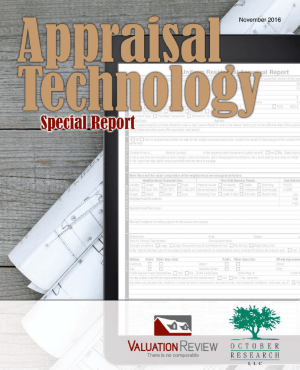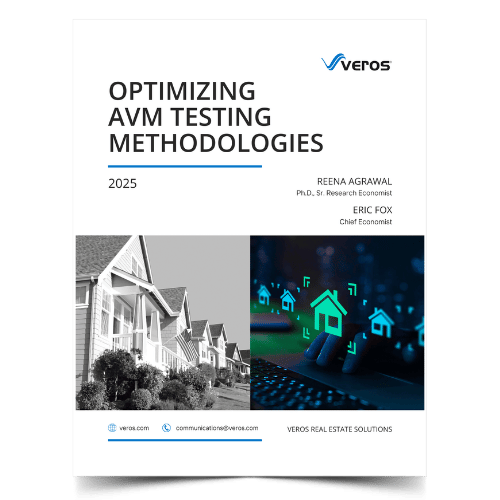
The below is an excerpt from Valuation Review – Appraisal Technology Special Report
November 2016 Issue | Mike Holzheimer, Editor | www.valuationreview.com
PDF of the original article as it appeared in Valuation Review
The Federal Housing Administration’s (FHA) Electronic Appraisal Delivery (EAD) portal became mandatory for use by mortgagees in June. Mortgagees needed to be registered for and on boarded to the EAD portal to avoid potential disruptions in their FHA case processing, as every FHA mortgage that began after that date must have its appraisal submitted through the EAD portal.
There was much time and work put into the process for easier access and overall acceptability to be the end results, said Cheryl Walker, home valuation policy division director for the Department of Housing and Urban Development (HUD).
“The process was designed to cause minimal impact to appraisers,” Walker said. “FHA has adopted the MISMO data standards deployed by Fannie Mae® and Freddie Mac® to promote more of a universal data delivery standard. FHA engaged with the appraisal software companies early in the process and continues to receive their assistance in making sure the data requirements are resolved on the appraisers’ desktop.”
The software used to create the EAD portal was built on the model for the Uniform Collateral Data Portal which was put in place by Fannie Mae and Freddie Mac. Both portals were designed by Veros.
The Electronic Appraisal Delivery (EAD) portal roll out has had minimal impact to the appraiser community, Veros Strategic Initiatives Senior Vice President Chuck Rumfola said.
“A significant benefit of FHA’s approach in the creation and roll out of EAD is that they took a page from Fannie Mae and Freddie Mac’s playbook on the successful roll out of UCDP® (Uniform Collateral Data Portal®). The GSEs (government-sponsored enterprises) were highly strategic in creating the Uniform Appraisal Dataset (UAD) and crafting a communication and training plan spanning more than a year up to the UCDP mandate. This created a solid foundation for appraisal forms vendors and appraisers, as well as for the lenders and technology providers who received this data.
“So adoption of the core principals of EAD for the appraiser – that is, electronic delivery of the MISMO XML – were already in place,” Rumfola added. “The biggest variables in comparison to UCDP are the validation of the FHA case number upon entry to EAD, and the requirement of the ‘digital signature.’ These variables though, have more to do with the delivering technology than with the appraisers themselves.”
The EAD portal’s industry standard technology was designed to help mortgagees:
- Identify data and compliance issues up-front;
- Reduce error rates before endorsement; and
- Streamline data entry processes between the portal and the FHA Connection (FHAC) system’s Appraisal Logging screen.
The technology is easy to use and adapt to,” Walker said. “The Single Family and Condo forms follow Fannie Mae and Freddie Mac’s UAD data standards. FHA receives the Manufactured Home and Two- to Four-Family Forms in the companion Errata 1 (MISMO) format.
Rumfola said the portal was designed to align with the UCDP system to minimize the impact to lenders. That, in turn, should help appraisers and appraisal management companies.
“Lenders can deliver the appraisal data through the web, build out a systems-to-systems interface, or leverage a third-party platform with a completed integration,” Rumfola said. “There are minor differences, but overall the processes are very similar.”
Rumfola also said that the biggest variables between UCDP and EAD have to do with making sure the technology can support technical differences in FHA’s requirements.
“If the appraisal XML is passing through an integration, it is important that the FHA case number will map appropriately for a successful submission,” he said. “It is also imperative that the technology does not take any interim steps to ‘break apart’ the appraisal file in transmission. Doing so invalidates what we’ll refer to as the ‘digital signature,’ and the submission will be rejected. This happens if an appraisal goes through a PDF extraction process, or if the appraisal platform technology has any workflow steps which parse out and then reconstruct the file.”
But lenders and technology vendors should not assume that EAD is a carbon copy of UCDP, Rumfola said. Veros provides proprietary platform technology and system-to-system connections for AMCs, lenders and other mortgage technology to assist with integrating directly to EAD that Rumfola said accounted for variations that exist.
We focus on making the technology easy to adapt to by providing a single entry point for the user and streamlining the appraisal flow whether the file is meant for UCDP (Fannie Mae and/or Freddie Mac) or EAD (FHA),” he said.
Regarding data field requirements, appraisers just need to upload the latest version of their software of choice, using the tools provided to deploy and comply with the FHA data requirements.
Rumfola said there have not been major concerns with getting lenders through the rollout of the onboarding process.
We didn’t try to reinvent the wheel with the EAD rollout,” he said “The UCDP rollout was extremely smooth, and EAD has applied a largely similar approach. As a result, we expect another smooth rollout.







